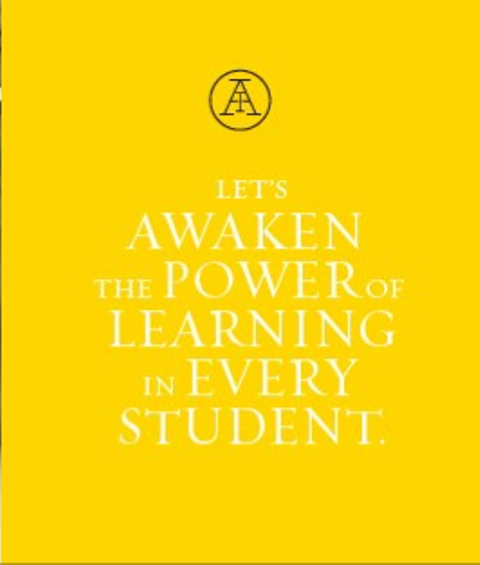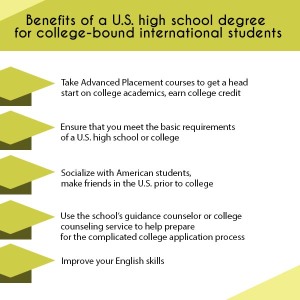
Most high schoolers have to wait a few years before thinking about travelling the world. School commitments, familial obligations and saving money to find those international adventures are part of the everyday reality that keeps the dream of exploring new cultures off in the distance — for a few years, at least.
However, for those high school students determined to travel before their twenties, there are definitely opportunities to live and travel abroad — even, in some cases, before securing that high school diploma.
With the chance to enjoy invaluable experiences like testing your second-language skills on a local population, visiting historic and culturally significant sites and learning how to live more independently, study abroad and work abroad programs for high school students presents a bounty of benefits.
Is there a way to have it all? Possibly — and one of the best ways to get there is by securing summer employment abroad.
Why not just get a summer job in the U.S.?
Young people stand to gain so much from meaningful travel experiences. Living abroad can spark new interests and unknown passions for history, language, culture and more.
Enjoying this kind of life-changing event before finishing high school may inspire a student to secure future travel opportunities — perhaps encouraging her to plan a gap year between high school and college, or to pursue a the multitude of study abroad programs available in colleges and universities.
For some American high school students, completing their education through an online high school makes the balance between academic success and a life filled with travel possible. K12 International Academy is one online high school available to students seeking this type of flexibility in education.
At the very least, living and working abroad while still in high school should provide some great material for college application essays!
What do you need to work abroad?
Passport
Travel outside of the United States will require some type of passport documentation. If a student is under the age of 16, passport applications require a few more forms and signatures from parents or legal guardian(s).
The U.S. State Department website for passport information is fairly easy to navigate and can help travelers anticipate costs, locate appropriate forms and study recommended preparations using a travel checklist.
Following the information found on the U.S. State Department website, 16- and 17-year-old applicants usually need to apply in person at a passport acceptance facility. The passport issued is valid for 10 years. Passports issued for citizens under age 16 are only valid for 5 years, and cost about $105 total.
Processing time it takes from application to receipt of a passport can vary. The standard time from application to the receipt of the passport averages from four to six weeks and costs $135. Expedited processing — door to door in two to three weeks — costs an additional $60.
Work Visa
Paid work in a foreign country typically requires a work visa as well as a passport. Students who plan to work overseas should plan to make arrangements well in advance of the anticipated departure date in order to secure employer sponsorship for the average paid position. There are some exceptions to this rule, including limited visas for charitable work — however these types of exceptions usually apply only to unpaid opportunities.
TEFL Certification
If a student traveler wishes to teach English abroad (paid or unpaid), she should look into Teaching English as a Foreign Language (TEFL) certification programs and see if one would benefit her cause. While certificates are offered by many universities and online institutions, the training itself is often tailored to specific locales, making the origin of the certificate important to potential summer employers.
Paid vs. Unpaid
Paid Summer Jobs
The competition for paid jobs suitable for teenagers can be fierce! This is because paid opportunities almost always require a work visa and employer sponsorship. If a student starts submitting applications well in advance of summer, she can maximize her chances of securing employer sponsorship.
Some fee-based support agencies can help a student find footing with sponsorship and housing programs, and even special job application services (but not actual job placement).
Other paid opportunities that are less competitive, but still require advanced planning and coordination with placement agencies, non-profits or employment agencies. These include:
- Au pair – Though the demand for male au pairs is nearly nonexistent, providing part-time paid child care services to individual families is a popular method for young women to experience life abroad.
- Manual labor – Most people, even in local populations, never experience their nation’s countryside by working the land itself. If a student loves spending time outdoors and is not adverse to hard physical labor, an agricultural job might be a good match.
- Theme parks – Theme parks are often very open to hiring international students for the summer. They can make great summertime employers, especially if the student already speaks the native language.
- Summer camps – Similar to the U.S., many countries have adopted the practice of sending kids and teens to summer sleep-away camps, especially ones that focus on learning English. Native English speakers are essential to their counselor staff.
Unpaid Summer Jobs
Unpaid job opportunities will be easier to come by and may not always require a work visa and sponsorship. For formal unpaid internships, these can still be quite competitive because of the need for official employer sponsorship. However, unpaid opportunities still abound for teaching English as a foreign language.
If a youngster is a serious student of history, she may consider something a bit off the beaten path, like an archeological dig. She’ll spend her summer on an excavation site sifting through a ton of dirt, but will enjoy a hands-on historical experience and gain practical experience for future studies.
Mission trips can also be an opportunity for students looking for a faith-based experience. Most volunteering mission trips require little to no experience or qualifications and can be organized through specific agencies and religious institutions. Though students on a mission often must pay for travel expenses and rarely earn money, this type of travel experience offers one of the easiest (from a bureaucratic perspective) and most inexpensive opportunities for teen summer travel.
Where to start
Required Documents
The U.S. State Department suggests following this travel checklist, to ensure travelers have the basics covered. Learning about local customs and cultural norms, travel warnings, health concerns, financial practicalities, the location of nearby embassies or consulates and other important facts should be high on the list of any American headed overseas, particularly a young traveler planning to spend significant time in a foreign country.
Shelter
Whether working, volunteering, or studying abroad, the student traveler will need a place to sleep at night. Once her required documents are in order, knowing the options for living arrangements is the logical next step.
A great starting point is reaching out to any friends or family who are permanent residents of another country. Couch-surfing for a summer can significantly reduce the cost of being away from home! Having a predetermined locale also helps you narrow your job search efforts to a specific region.
Another option is to utilize a third party agency that specializes in facilitating work experiences abroad. Though some are tied directly to job placement, many stop just short of a job guarantee, instead addressing all other aspects, such as shelter, visas, transportation and more. Having an experienced partner to help navigate the complicated bureaucratic process of international relocation can be instrumental in making that summer dream a reality.
Ready to travel? Consider an online high school.
From the veteran traveler to the junior globetrotter, travel often leaves one wanting more. Unfortunately the scheduling demands and workload of high school are a common hindrance to international travel for American students, but if a student really needs to break the mold, she can.
A fully accredited online high school can provide the flexibility and mobility required for teens to complete their high school education from anywhere in the world (with a good internet connection!). Schools like K12 International Academy offer challenging curriculum that prepares adventurous young learners for the competitive college application process. Enjoy the trip!










